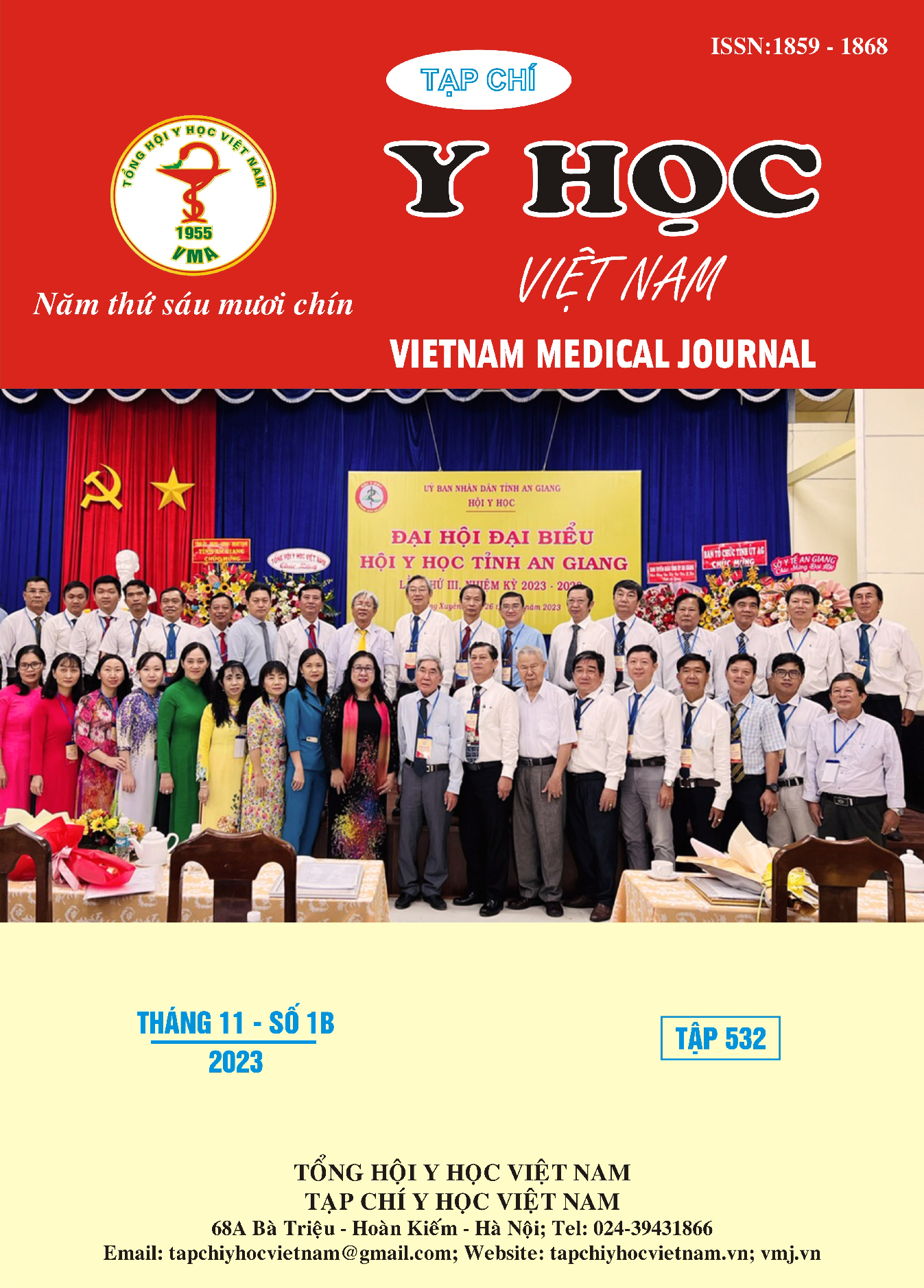PREDICTIVE VALUE OF 2D SPECKLE TRACKING ECHOCARDIOGRAPHY IN SHORT-TERM PROGNOSIS IN PATIENTS WITH ACUTE MYOCARDIAL INFARCTION WITH REDUCED LEFT VENTRICULAR EJECTION FRACTION
Main Article Content
Abstract
Objective: To assess the value of global longitudinal strain (GLS) measured by 2D echocardiography in predicting major adverse cardiac events (MACE) and mortality in patients with acute coronary syndrome (ACS) and reduced left ventricular ejection fraction (LVEF). Subjects and Methods: This prospective, cross-sectional study included 116 ACS patients treated at the Cardiology Department of Cho Ray Hospital from November 2022 to April 2023. 2D echocardiography with GLS measurement was performed before discharge. Patients were followed up for cardiac events, including all-cause mortality, recurrent myocardial infarction, stroke, and heart failure readmission. Results: The average age was 70 ± 11.22 years, and 60.34% were male. Killip class 22 was present in 63.0% of patients. Fifty percent of patients experienced MACE, and 30 patients died during the study period. GLS predicted MACE with an area under the curve (AUC) of 0.74 (95% CI: 0.68 -0.85). At a GLS cutoff of 2-9.4%, MACE was identified with a sensitivity of 85% and specificity of 55%. In multivariate Cox analysis, only GLS independently predicted MACE with a hazard ratio (HR) of 1.18 (95% CI: 1.05 - 1.32, p = 0.004). GLS predicted mortality with an AUC of 0.73 (95% CI: 0.62 - 0.83) at a GLS cutoff of ≥ -9.4%, identifying mortality with a sensitivity of 89% and specificity of 75%. In multivariate Cox analysis, GLS was the only independent prognostic factor for mortality with an HR of 1.24 (95% CI: 1.05 - 1.47, p = 0.01). Conclusion: GLS by 2D speckle tracking echocardiography strongly and independently predicted MACE and short-term mortality inpatient with acute myocardial infarction and reduced left ventricular ejection fraction
Article Details
Keywords
GLS, major adverse cardiac events, acute myocardial infarction.
References
2. Brophy JM (2007), Risk stratification following non-ST segment elevation myocardial infarction: Is the glass half-full or half-empty?, The Canadian Journal of Cardiology, Số 23(13), 1080-1.
3. World Health Organization (2017), Cardiovascular diseases (CVDs), UR: https://www.who.int/news-room/fact-sheets/detail/cardiovascular diseases (cvds).
4. Eldin Ibrahim MK E-kK, Ragab TM (2020). Two Dimensional Speckle Tracking Echocardiography Assessment of Left Ventricular Remodeling in patients after myocardial infarction, J Cardiol Clin Res, 8(1), 1149.
5. Smiseth O. A, Torp H, Opdahl A, et al (2016). Myocardial strain imaging: how useful is it in clinical decision making?, Eur Heart J, 37 (15), 1196-1207.
6. Pastore M. C, Mandoli G. E, Contorni F, et al. (2021). Speckle tracking echocardiography: Early predictor of diagnosis and prognosis in coronary artery disease. Biomed. Res. Int, 6685378. doi:10.1155/2021/6685378.
7. Iwahashi N, Kirigaya J, Gohbara M, et al. (2022). Mechanical dispersion combined with global longitudinal strain estimated by three dimensional speckle tracking in patients with ST elevation myocardial infarction, IJC Heart & Vasculature, 40, 101028.
8. Trịnh Việt Hà, Nguyễn Thị Thu Hoài, Đỗ Doãn Lợi (2021), Giá trị tiên lượng của sức căng cơ tim ở bệnh nhân Hội chứng vành cấp không ST chênh lên được can thiệp động mạch vành qua da, Tạp chí Tim mạch học Việt Nam, 94 +95, 197 - 204.
9. Abou R, Goedemans L, van der Bijl P, et al. (2020). Correlates and Long Term Implications of Left Ventricular Mechanical Dispersion by Two Dimensional Speckle-Tracking Echocardiography in Patients with ST-Segment Elevation Myocardial Infarction, J Am Soc Echocardiogr, 33(8), 964-972.
10. Nguyễn Anh Tuấn, Nguyễn Thị Thu Hoài, Phạm Nguyên Sơn (2022), Giá trị dự báo biến cố tim mạch chính và tử vong của sức căng cơ tim ở bệnh nhân nhồi máu cơ tim cấp có ST chênh lên sau can thiệp động mạch vành qua da, Tạp chí y dược lâm sàng 108, 17(5), 39 - 48


